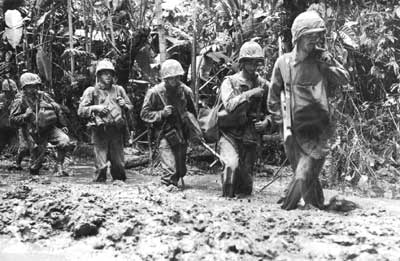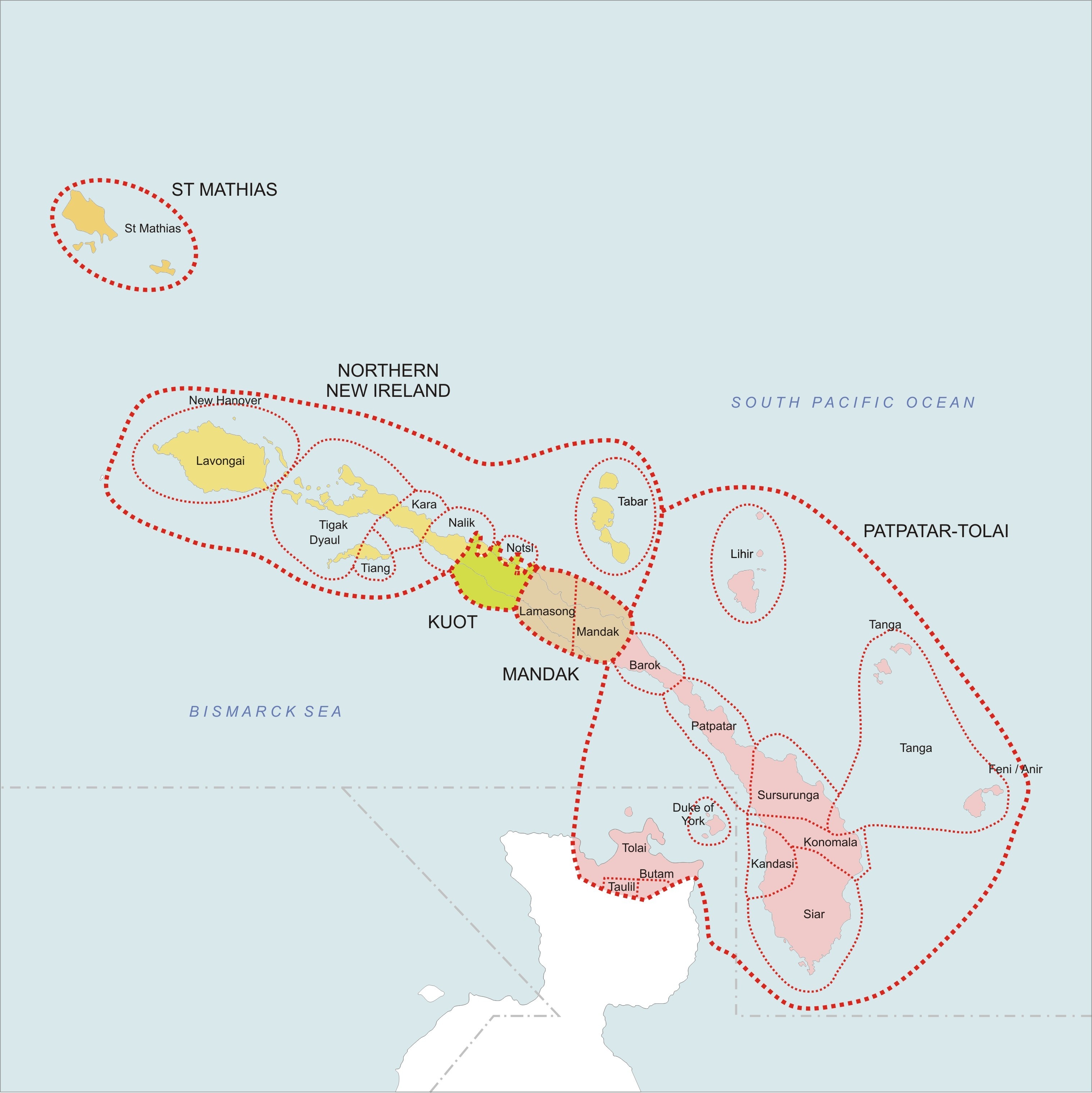|
Islands Region (Papua New Guinea)
The New Guinea Islands Region is one of four regions of Papua New Guinea (PNG), comprising the Bismarck Archipelago and north-western Solomon Islands Archipelago, located north-east of New Guinea island (the mainland). This is the least populous inhabited region of the country with an estimated population of 1,096,000 (15% of PNG) in 2011.PNG National Statistical Office It is distinct through its prehistory and history, as shown by the prevalence of Austronesian languages, and archeological findings of Lapita pottery culture. Subdivision The Region is administratively divided into five provinces: * Bougainville (North Solomons) *East New Britain * Manus * New Ireland *West New Britain See also * Bougainville Island * Provinces of Papua New Guinea For administrative purposes, Papua New Guinea is divided into administrative divisions Administrative division, administrative unit,Article 3(1). country subdivision, administrative region, subnational entity, constit ... [...More Info...] [...Related Items...] OR: [Wikipedia] [Google] [Baidu] |
Regions Of Papua New Guinea
Papua New Guinea is divided into four regions, which are its broadest administrative divisions of Papua New Guinea. While the 22 provincial-level divisions are the primary administrative divisions of PNG, the regions are quite significant in daily life, as they are often the basis for organisation of government services (such as police), corporate operations, sporting competitions, and even the machinations of politics. Overview For instance, there has been much discussion over the years of how many prime ministers have come from each region, and whether a particular region is due to provide the next one. Ministers and departmental heads are often appointed with an eye to maintaining an overall balance between the regions. Regions People generally identify quite strongly with their region, and inter-region rivalries can be intense. There are four regions, each of which comprises a number of provinces: * Highlands Region: Chimbu (Simbu), Eastern Highlands, Enga, Hela, Jiwa ... [...More Info...] [...Related Items...] OR: [Wikipedia] [Google] [Baidu] |
Lapita Culture
The Lapita culture is the name given to a Neolithic Austronesian people and their material culture, who settled Island Melanesia via a seaborne migration at around 1600 to 500 BCE. They are believed to have originated from the northern Philippines, either directly, via the Mariana Islands, or both. They were notable for their distinctive geometric designs on dentate-stamped pottery, which closely resemble the pottery recovered from the Nagsabaran archaeological site in northern Luzon. The Lapita intermarried with the Papuan populations to various degrees, and are the direct ancestors of the Austronesian peoples of Polynesia, eastern Micronesia, and Island Melanesia. Etymology The term 'Lapita' was coined by archaeologists after mishearing a word in the local Haveke language, ''xapeta'a'', which means 'to dig a hole' or 'the place where one digs', during the 1952 excavation in New Caledonia. The Lapita archaeological culture is named after the type site where it was first unco ... [...More Info...] [...Related Items...] OR: [Wikipedia] [Google] [Baidu] |
Provinces Of Papua New Guinea
For administrative purposes, Papua New Guinea is divided into administrative divisions Administrative division, administrative unit,Article 3(1). country subdivision, administrative region, subnational entity, constituent state, as well as many similar terms, are generic names for geographical areas into which a particular, ind ... called provinces. There are 22 provincial-level divisions, which include #List of provinces, 20 provinces, the Autonomous Region of Bougainville, and the National Capital District (Papua New Guinea), National Capital District of Port Moresby. In 2009, the National Parliament of Papua New Guinea created two additional provinces, that officially came into being on 17 May 2012. [...More Info...] [...Related Items...] OR: [Wikipedia] [Google] [Baidu] |
Bougainville Island
Bougainville Island (Tok Pisin: ''Bogenvil'') is the main island of the Autonomous Region of Bougainville, which is part of Papua New Guinea. It was previously the main landmass in the German Empire-associated North Solomons. Its land area is . The population of the whole province, including nearby islets such as the Carterets, is approximately 300,000 (2019 census). The highest point is Mount Balbi, on the main island, at . The much smaller Buka Island, , lies to the north, across the wide Buka Strait. Even though the strait is narrow, there is no bridge across it, but there is a regular ferry service between the key settlements on either side. The main airport (or airstrip) in the north is in the town of Buka. Bougainville is the largest island in the Solomon Islands archipelago. Most of the islands in this archipelago (which are primarily concentrated in the southern and eastern portions of it) are part of the politically independent Solomon Islands. Two of these islands ... [...More Info...] [...Related Items...] OR: [Wikipedia] [Google] [Baidu] |
West New Britain Province
West New Britain is a province of Papua New Guinea on the islands of New Britain. The provincial capital is Kimbe. The area of the province is 20,387 km² with a population of 264,264 as of the 2011 census. The province's only land border is with East New Britain. There are seven major tribes, the Nakanai, Bakovi, Kove, Unea, Maleu, Arowe, speaking about 25 languages. People from West New Britain are referred to as "Kombes" in Papua New Guinea, in metonymic reference to the significant Kove (or Kombe) people. The Kove people were reported on by the anthropologist Ann Chowning in ''National Geographic'' magazine during the 1960s. Within Papua New Guinea they are noted for their practice of superincision of the penis — circumcision is generally though inaccurately referred to among Papua New Guineans as "the Kombe cut" — but was formerly practiced in other northern coastal regions of New Guinea island and the New Guinea Islands. The predominant religious affiliation is Roma ... [...More Info...] [...Related Items...] OR: [Wikipedia] [Google] [Baidu] |
New Ireland Province
New Ireland Province, formerly New Mecklenburg (german: Neu-Mecklenburg), and Nova Hibernia, is the northeasternmost province of Papua New Guinea. Physical geography The largest island of the province is New Ireland. Also part of the province are numerous smaller islands, including Saint Matthias Group (Mussau, Emirau), New Hanover, Djaul, Tabar Group ( Tabar, Tatau, Simberi), Lihir, Tanga Group (Malendok, Boang), Feni Islands (Ambitle, Babase) and Anir. The land area of the province is around 9 560 km². The sea area within the Exclusive Economic Zone (EEZ) of New Ireland Province is around 230,000 km². Ecology In the early days of the French Revolution while searching for a lost scientific expedition the vessel La Recherche passed by New Ireland. On board was the prominent botanist Jacques-Julien Houtou de Labillardière who noted in his journal fine stands of teak (tectona grandis) trees growing at the southern end of the island. This marks the easter ... [...More Info...] [...Related Items...] OR: [Wikipedia] [Google] [Baidu] |
Manus Province
Manus Province is the smallest province in Papua New Guinea in terms of both land area and population, with a land area of , but with more than of water, and the total population is 60,485 (2011 census). The provincial town of Manus is Lorengau. The province consists of only one district (Manus District; with identical boundaries to those of the province), 12 Local Level Governments (LLGs) and 127 Wards. The province is made up of the Admiralty Islands (a group of 18 islands in the Bismarck Archipelago), as well as Wuvulu Island and nearby atolls in the west, which collectively are referred to as the Western Islands. The largest island in the group is Manus Island, where Lorengau and a former Australian immigration detention centre are located. Flag The Manus friarbird, known locally as the chauka, is represented on the Manus provincial flag. Designer of the Manus Province flag Luke Bulei explained his reasons for its design in 1977: chauka is only found in the Manus provinc ... [...More Info...] [...Related Items...] OR: [Wikipedia] [Google] [Baidu] |
East New Britain Province
East New Britain is a province of Papua New Guinea, consisting of the north-eastern part of the island of New Britain and the Duke of York Islands. The capital of the province is Kokopo, not far from the old capital of Rabaul, which was largely destroyed in a volcanic eruption in 1994. East New Britain covers a total land area of , and the province's population was reported as 220,133 in the 2000 census, rising to 328,369 in the 2011 count. Provincial coastal waters extend over an area of . The province's only land border is with West New Britain Province to the west, and it also shares a maritime border with New Ireland Province to the east. East New Britain has a dual economy: a cash economy operates side by side with the subsistence-farming sector. The main crops produced for export are cocoa and copra. Tourism continues to be an increasingly important sector of the provincial economy. Languages There are sixteen Austronesian languages spoken in the province, of which Kuanua, ... [...More Info...] [...Related Items...] OR: [Wikipedia] [Google] [Baidu] |
Autonomous Region Of Bougainville
Bougainville ( ; ; Tok Pisin: ''Bogenvil''), officially the Autonomous Region of Bougainville (Tok Pisin: ''Otonomos Region bilong Bogenvil''), is an autonomous region in Papua New Guinea. The largest island is Bougainville Island, while the region also includes Buka Island and a number of outlying islands and atolls. The interim capital is Buka, although this is considered temporary, with the capital likely to move. One potential location is Arawa, the previous capital. In 2011, the region had an estimated population of 250,000 people. The lingua franca of Bougainville is Tok Pisin, while a variety of Austronesian and non-Austronesian languages are also spoken. The region includes several Polynesian outliers where Polynesian languages are spoken. Geographically the islands of Bougainville and Buka are part of the Solomon Islands archipelago, but are politically separate from the independent country of Solomon Islands. Historically the region was known as the North Solomons. ... [...More Info...] [...Related Items...] OR: [Wikipedia] [Google] [Baidu] |
List Of Sovereign States
The following is a list providing an overview of sovereign states around the world with information on their status and recognition of their sovereignty. The 206 listed states can be divided into three categories based on membership within the United Nations System: 193 UN member states, 2 UN General Assembly non-member observer states, and 11 other states. The ''sovereignty dispute'' column indicates states having undisputed sovereignty (188 states, of which there are 187 UN member states and 1 UN General Assembly non-member observer state), states having disputed sovereignty (16 states, of which there are 6 UN member states, 1 UN General Assembly non-member observer state, and 9 de facto states), and states having a special political status (2 states, both in free association with New Zealand). Compiling a list such as this can be a complicated and controversial process, as there is no definition that is binding on all the members of the community of nations concerni ... [...More Info...] [...Related Items...] OR: [Wikipedia] [Google] [Baidu] |
New Guinea
New Guinea (; Hiri Motu Hiri Motu, also known as Police Motu, Pidgin Motu, or just Hiri, is a language of Papua New Guinea, which is spoken in surrounding areas of Port Moresby (Capital of Papua New Guinea). It is a simplified version of Motu, from the Austronesian l ...: ''Niu Gini''; id, Papua, or , historically ) is the List of islands by area, world's second-largest island with an area of . Located in Oceania in the southwestern Pacific Ocean, the island is separated from Mainland Australia, Australia by the wide Torres Strait, though both landmasses lie on the same continental shelf. Numerous smaller islands are located to the west and east. The eastern half of the island is the major land mass of the independent state of Papua New Guinea. The western half, known as Western New Guinea, forms a part of Indonesia and is organized as the provinces of Papua (province), Papua, Central Papua, Highland Papua, South Papua, Southwest Papua, and West Papua (province), West ... [...More Info...] [...Related Items...] OR: [Wikipedia] [Google] [Baidu] |





